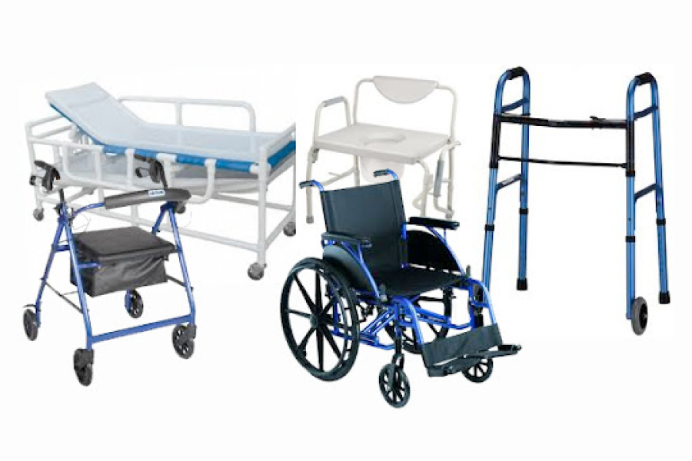What Is Health Insurance?

Health Insurance is an important form of insurance that covers medical expenses and provides financial assistance when needed. It is a type of insurance that guards against the financial burden of medical costs and can be obtained through private companies or government programs. It is a must-have for anyone who wants to protect their health and finances, as it can reduce the risk of facing costly medical bills.
Most health insurance contracts are for either a single year, during which time the insurance company is responsible for covering all costs associated with illness, injury, pregnancy, or preventative care. Health insurance agreements generally come with exceptions to coverage including:
- A deductible that requires the consumer to pay certain healthcare costs "out-of-pocket" up to a maximum amount before the company coverage begins
- One or more co-payments that require the consumer to pay a set share of the cost for specific services or procedures
Do I need Health Insurance?
Having health insurance is an important part of taking care of your health and financial well-being. It can help you pay for medical expenses as well as provide peace of mind if something unexpected happens. Making sure that you have the right type of health insurance in place is important in order to make sure that you are getting the best coverage for your needs.
Definitions to Know about Health insurance
- Premium is a fee that policyholders pay to their insurer in exchange for coverage and protection against risks such as loss or damage. Premiums are typically paid on a monthly, quarterly, or annual basis depending on the type of policy chosen. The amount of premium paid depends on various factors including the insured's age, gender, lifestyle, type of coverage chosen, and any discounts they may be eligible for.
- A deductible is a set amount of money that must be paid by an individual before their insurance company covers their medical costs. It is an important factor to consider when choosing an insurance plan as it affects both the overall cost and coverage of the plan.
- A copay is a type of cost-sharing requirement set by an insurance policy. It is an amount that the insured person needs to pay out-of-pocket for particular types of care and services, such as doctor visits or prescriptions. Copays are designed to discourage unhealthy habits, such as overusing medications or seeking unnecessary medical treatments.
- Coinsurance is an important concept for individuals to understand when it comes to their insurance coverage. It is a type of cost-sharing agreement between a policyholder and their insurer, requiring policyholders to pay a certain percentage of covered medical costs as part of their overall health plan. Coinsurance helps insurers spread out the risk associated with providing healthcare coverage, making it a popular option for many insurance companies.
Insurance plans with larger monthly premiums normally have lower out-of-pocket costs. When shopping for insurance policies, weigh the benefit of reduced monthly payments against the possible financial risk of a large, unexpected illness in the case of an accident.
What Are Out-of-Pocket Expenses?
When it comes to health insurance, understanding out-of-pocket expenses is essential. Out-of-pocket expenses are costs that you must pay yourself when using your insurance plan. While your health insurance may cover much of the cost of hospitalizations, doctor's visits, and other medical care, there are often times when you will be responsible for some of the costs.
Does Medicare Cover Durable Medical Equipment?
Durable medical equipment is a long-lasting, reusable device that offers a therapeutic benefit to patients. This often involves wheelchairs, walkers, and hospital beds. Medicare Part B pays for this equipment if it is deemed medically necessary and prescribed by your doctor.
What Is Durable Medical Equipment?

Durable Medical Equipment (DME) is an important consideration when it comes to both health and insurance. It refers to any medical equipment that is used repeatedly and can withstand repeated use, such as wheelchairs, oxygen tanks, and crutches. Many people need DME in order to live safely and comfortably at home or anywhere else, but the cost of purchasing this equipment can be daunting. Fortunately, there are options available involving insurance coverage that may help make DME more affordable.
Medicare Coverage for Home Traction Unit

Medicare covers home traction equipment (Saunders Cervical Traction Device) that's prescribed by a doctor as a part of durable medical equipment (DME) when a physician directs usage of the equipment at home. Medicare will reimburse 80 percent of the cost, and you will owe the remaining 20 percent once you've paid your Part B deductible.
Will Medicare Pay for a Home Traction Device?
Medicare is a form of insurance provided by the United States government to help cover healthcare costs for certain individuals. It is available to those aged 65 and over, as well as those with certain disabilities and health conditions. Medicare offers several different types of coverage, including hospital insurance, medical insurance, and prescription drug coverage. To learn more about the process of how to get a Saunders Cervical Traction Device via Insurance, you may check the article Cervical Traction Device: Insurance Coverage & How to Get One. We have created the article to explain and provide information on how insurance works.
Things to know about Health Insurance:
- Medical and surgical expenses and future preventive health care services are paid for by medical insurance for the patient in exchange for monthly payments.
- Generally, the more expensive a monthly premium is, the lower the out-of-pocket expenses are covered by the insured.
- Your share of the medical costs incurred in health insurance is your out-of-pocket expense. It may include deductibles, copays, and coinsurances.
- Some health plans have legally mandated out-of-pocket maximums that cap the total amount you must pay each year for covered medical expenses.
Start writing here...

